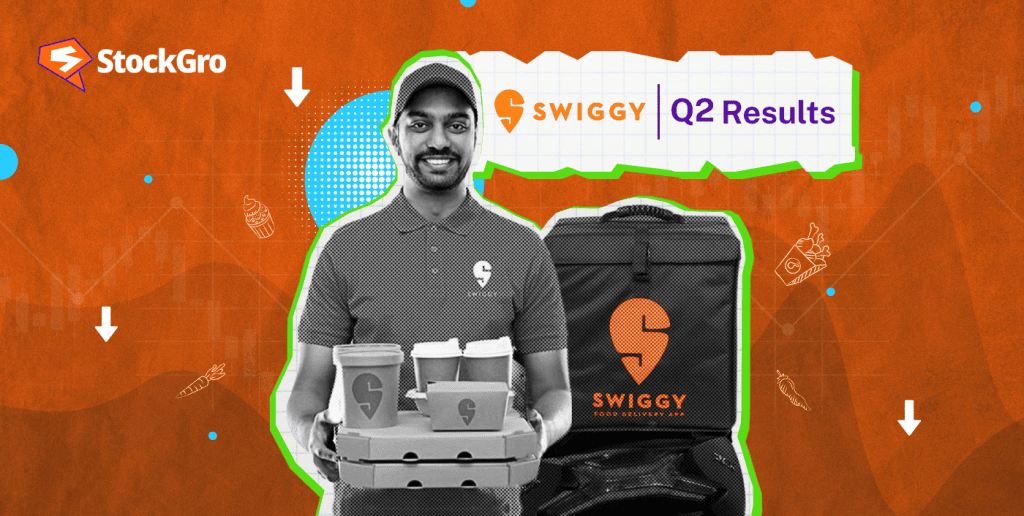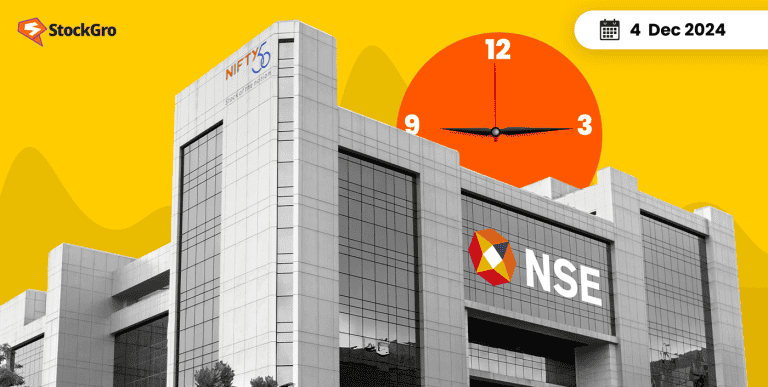
Swiggy, the food and grocery delivery giant, has released its first quarterly earnings report since going public. The report for Q2 FY25 showcases a mixed bag of improved financials and continued investments in growth. With robust performance across food delivery and quick commerce segments, here’s a breakdown of how Swiggy is shaping up post-IPO.
Swiggy Q2 at a glance
- Net Loss: ₹625.5 crore, down from ₹657 crore YoY
- Revenue Growth: 30% YoY at ₹3,601 crore
- Gross Order Value (GOV): ₹11,306 crore, up 30% YoY
- Adjusted EBITDA Loss: ₹341 crore, down 30% YoY
These figures reflect Swiggy’s continued focus on revenue growth while managing losses strategically.
Also read: Swiggy IPO: Key Details, GMP & Expert Advice on Investing
Revenue soars, but expenses grow too
Swiggy reported a 30% YoY increase in revenue, reaching ₹3,601 crore for the quarter. This growth was driven by strong order volumes in both the food delivery and quick commerce segments. However, the company’s total expenses also increased by 23%, hitting ₹4,309 crore.
Key metrics snapshot
| Metric | Q2 FY25 | Q2 FY24 | YoY Change |
| Net Loss | ₹625.5 crore | ₹657 crore | -5% |
| Revenue | ₹3,601 crore | ₹2,763 crore | 30% |
| GOV | ₹11,306 crore | ₹8,697 crore | 30% |
| Adjusted EBITDA Loss | ₹341 crore | ₹487 crore | -30% |
Food delivery: A steady performer
Swiggy’s food delivery business continues to shine, achieving ₹1,577 crore in revenue—a 22% YoY growth. The gross order value (GOV) for food delivery rose 5.6% QoQ to ₹7,191 crore. Despite narrowing overall losses, Swiggy’s food delivery segment posted an adjusted EBITDA of ₹112 crore, representing a margin of 1.6%, nearly doubling profitability.
The company’s innovative services, such as Bolt, its 10-minute restaurant delivery offering, already account for 5% of food deliveries within just two months of launch, highlighting Swiggy’s agility in catering to urban consumer demands.
You may also like: Swiggy’s journey during industry challenges and a $200 million loss
Quick commerce: A growth driver
Swiggy Instamart, its quick commerce vertical, emerged as a major contributor. Revenue from the segment doubled YoY to ₹490 crore, supported by a 24% QoQ growth in GOV to ₹3,382 crore.
Swiggy added 52 dark stores and expanded into 12 new cities during Q2, boosting operational capacity. By March 2025, the company plans to double its dark store count and increase their average size by 30-35%.
Instamart growth highlights
- GOV Growth: 75% YoY
- Revenue Share: 13.6% of overall revenue
- Average Delivery Time: 13 minutes
Swiggy expects Instamart to break even by Q3 FY26, reflecting its commitment to long-term growth despite initial challenges.
Strategic investments
To support its growth plans, Swiggy’s board approved a ₹1,600 crore investment in its logistics arm, Scootsy Logistics. The funds will be allocated via a rights issue and will focus on supply chain improvements.
Swiggy also announced plans to launch a subsidiary focusing on sports team management and event organisation, diversifying its portfolio beyond food and grocery delivery.
You may also read: Swiggy vs Zomato: Q-Commerce Showdown with Zepto
Share market performance
Since its IPO debut in November 2024, Swiggy’s shares have delivered a 29% return to investors, closing at ₹501.30 on December 3. The company’s steady financial improvements have bolstered market confidence, as seen by the 9.8% rally in stock prices ahead of the earnings announcement.
Conclusion
Swiggy’s Q2 FY25 results paint a promising picture of growth, innovation, and improving profitability. While challenges remain in managing quick commerce losses and expanding operational capacity, the company’s strategic initiatives and strong food delivery performance indicate a bright future.
As Swiggy navigates its journey as a publicly listed company, it continues to be a key player in India’s food-tech ecosystem.

